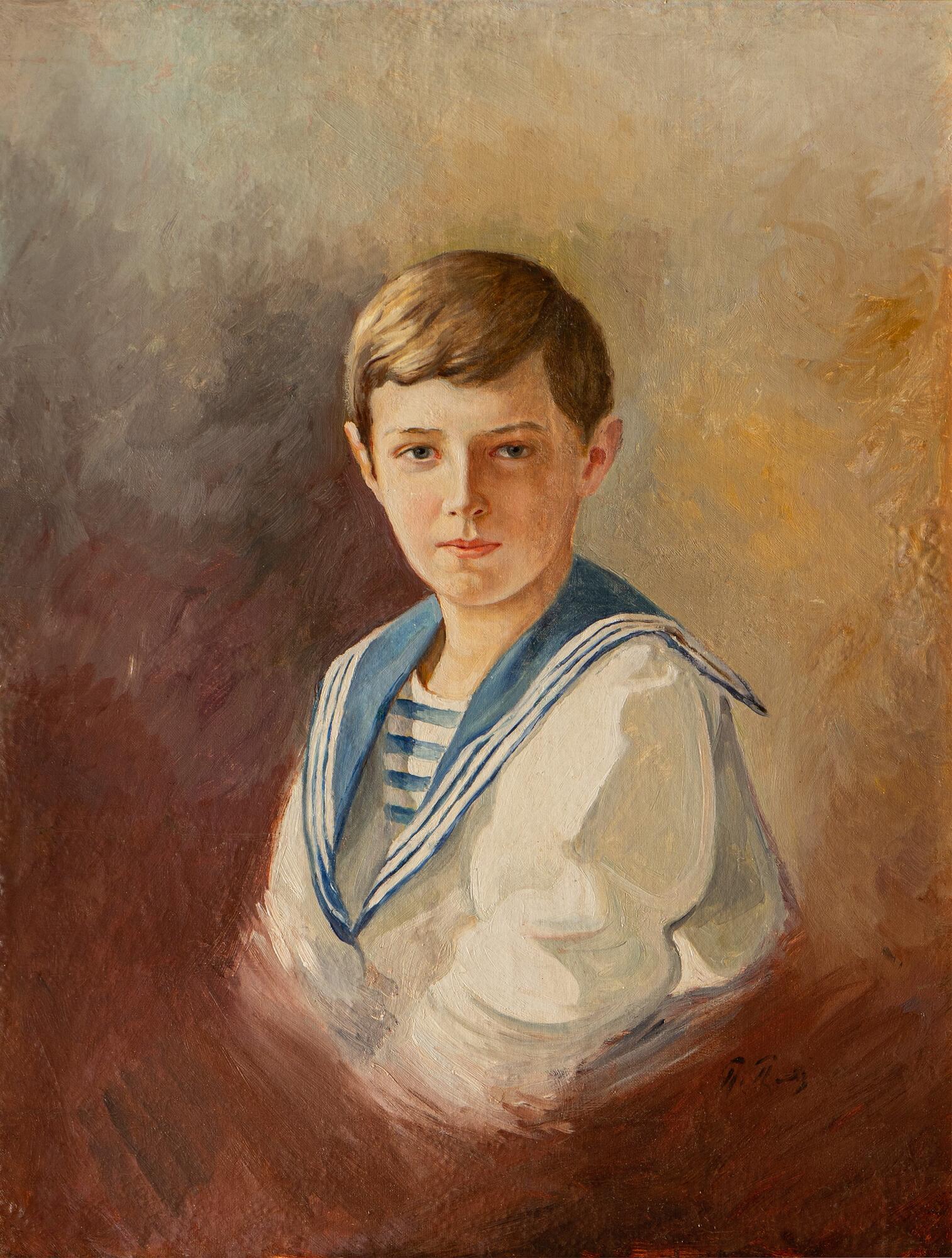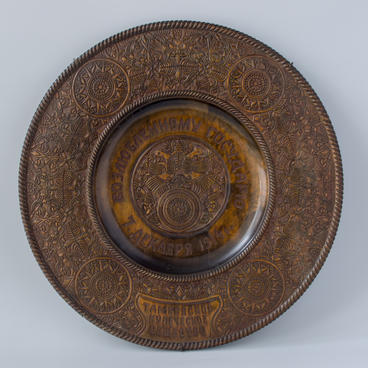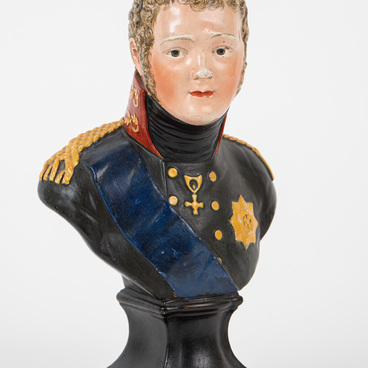The portrait of Tsesarevich and Grand Duke Alexei Nikolaevich on display at the museum, is the last portrait of the heir to the Russian throne in his lifetime and the only portrait of Alexei in the collection of the Tsarskoe Selo Museum and Heritage Site.
The portrait was painted by Pyotr Pershin, a Russian portraitist from an old landowner’s family in the Volga region.
He served as an officer in the Moscow Grenadier Regiment and, for his exceptional artistic abilities, was sent to study at the Imperial Academy of Arts in St. Petersburg. He studied in the battle painting class of Nikolay Samokish, Member of the Imperial Academy of Arts. On the occasion of the 300th anniversary of the House of Romanov he painted a series of 12 historical pieces for the Moscow magazine “Loyalty”, which were published as a separate edition.
In 1914, as World War I broke out, Pershin was assigned to the Stavka (general headquarters) of the Supreme Commander-in-Chief as a battle painter. He toured many sections of the front in a specially designed photography studio on a train. Also, Pyotr Petrovich gave drawing lessons to the heir to the throne.
After the revolution, in 1920, he emigrated from Russia with units of the White Army. From 1925 to 1932 he lived in Spain, where he carried out government artistic commissions. In 1932, Pyotr Petrovich moved to France, where he lived in Grasse until his death. During his emigration the artist painted mainly small watercolors, illustrated the history of Ancient Russia and everyday life of pre-revolutionary Russia. He lived isolated and only communicated with his spiritual father. The artist is buried in the Sainte-Brigitte Cemetery in Grasse.
In 2015, this portrait of the Tsesarevich was accidentally discovered in a cache during a major renovation of one of the Cavalier houses near the Catherine Palace, where the family of the court life-medic Yevgeny Botkin lived. Restoration of the painting revealed barely discernible initials at the bottom of the canvas, which helped establish the artist’s name. During his drawing lessons, which Pershin gave to the heir to the Russian throne in 1914–1916, he probably made some portrait sketches of Alexei Nikolaevich, and later painted a portrait of the Tsesarevich after his own pictures and drawings.
The portrait was painted by Pyotr Pershin, a Russian portraitist from an old landowner’s family in the Volga region.
He served as an officer in the Moscow Grenadier Regiment and, for his exceptional artistic abilities, was sent to study at the Imperial Academy of Arts in St. Petersburg. He studied in the battle painting class of Nikolay Samokish, Member of the Imperial Academy of Arts. On the occasion of the 300th anniversary of the House of Romanov he painted a series of 12 historical pieces for the Moscow magazine “Loyalty”, which were published as a separate edition.
In 1914, as World War I broke out, Pershin was assigned to the Stavka (general headquarters) of the Supreme Commander-in-Chief as a battle painter. He toured many sections of the front in a specially designed photography studio on a train. Also, Pyotr Petrovich gave drawing lessons to the heir to the throne.
After the revolution, in 1920, he emigrated from Russia with units of the White Army. From 1925 to 1932 he lived in Spain, where he carried out government artistic commissions. In 1932, Pyotr Petrovich moved to France, where he lived in Grasse until his death. During his emigration the artist painted mainly small watercolors, illustrated the history of Ancient Russia and everyday life of pre-revolutionary Russia. He lived isolated and only communicated with his spiritual father. The artist is buried in the Sainte-Brigitte Cemetery in Grasse.
In 2015, this portrait of the Tsesarevich was accidentally discovered in a cache during a major renovation of one of the Cavalier houses near the Catherine Palace, where the family of the court life-medic Yevgeny Botkin lived. Restoration of the painting revealed barely discernible initials at the bottom of the canvas, which helped establish the artist’s name. During his drawing lessons, which Pershin gave to the heir to the Russian throne in 1914–1916, he probably made some portrait sketches of Alexei Nikolaevich, and later painted a portrait of the Tsesarevich after his own pictures and drawings.



